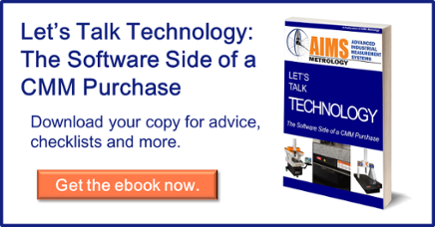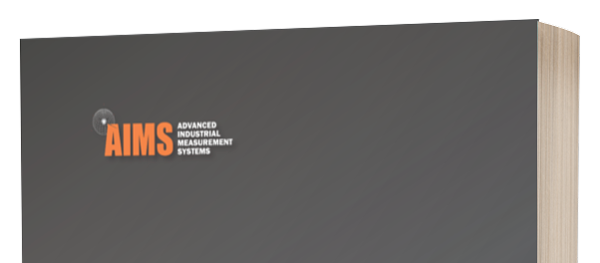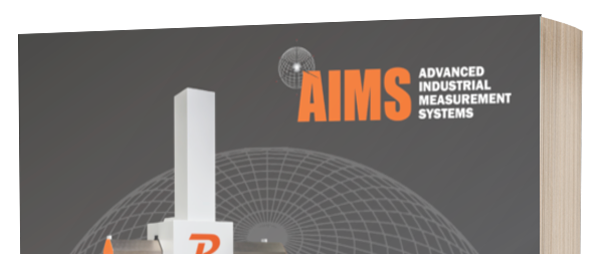We talk a lot about CMM software - but the hardware merits a mention or two now and then, especially when there is something new to talk about. Point of fact, our focus is the CMM probe, the most important piece of a coordinate measuring machine. The probe you select can mean the difference between a CMM that is a powerful asset or one that…well…frankly isnt. As Ian Wright says at Engineering.com, “A coordinate measuring machine is only as good as its probe(s).”
If you regularly inspect a variety of surface characteristics (e.g. flat, contour, soft material, etc.) or need to improve measurement uncertainty to stay within tight tolerances, you need to understand the basics of CMM probes. More robust measurement capability means improved form, fit, and function of parts for your customers and a wider range of parts your company can fabricate. There's no way around it - you need the right probe for your application.
The many types of CMM probes on the market fall into two broad categories: non-contact, such as optical and laser line probes, and contact, such as touch-trigger and scanning probes. Each has strengths and drawbacks in terms of accuracy, throughput efficiency and expense. Knowing how different probes work and where they excel helps you consider the trade-offs and make an informed choice.
Non-Contact Probes
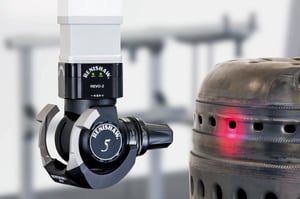 Looking to maximize throughput? Do you measure extremely small or flexible parts or parts with complex contouring? Non-contact probes have features that can help in these cases: they gather many data points quickly and without actually touching the workpiece. This reduces the risk of damaging either the probe’s stylus or the workpiece itself. The Renishaw RPV vision probe for the REVO-2 system is one example.
Looking to maximize throughput? Do you measure extremely small or flexible parts or parts with complex contouring? Non-contact probes have features that can help in these cases: they gather many data points quickly and without actually touching the workpiece. This reduces the risk of damaging either the probe’s stylus or the workpiece itself. The Renishaw RPV vision probe for the REVO-2 system is one example.
Optical probes gather data with still-image or video cameras. Laser line probes measure coordinates at discrete points on the workpiece, similar to touch-trigger contact probes, but with a laser beam instead of a stylus and ball. Both types of non-contact probes calculate coordinates through triangulation rather than from a direct physical reading. A large amount of data is collected quickly, boosting throughput and efficiency; however, drawbacks include reduced accuracy due to lack of discrete physical measurements and increased price of electro-optical and laser hardware.
Contact Probes
Contact probes, as their name implies, gather data by touching the workpiece. Measurements can be taken at intervals, as with touch-trigger probes, or continuously, as with scanning probes. If superior accuracy is your top priority, contact probes are the way to go. Because they must make contact with the workpiece to record data, and because surface complexity of the piece can create measuring challenges (e.g. depth or diameter of openings, multiple contours, etc.), contact probes are generally slower than non-contact probes. Despite reduced speed, contact probing generally results in higher accuracy and greater versatility in measuring due to the range of styli and tips available.
Motion technology also affects throughput speed. One longstanding design is a 3-axis system with a fixed-position head. In a 3-axis system, the entire CMM moves along one axis at a time (X, Y, or Z), stopping to change direction as needed to take measurements. This can lead to data errors from vibrations or collisions as the CMM changes position, especially as speed increases. It also requires the time for frequent head indexing and stylus changes to maintain contact with the workpiece.
New 5-axis technology avoids these problems with two sources of motion at once: the CMM moves steadily in a single direction while a probe head quickly moves in many directions. This keeps the probe in contact with the workpiece, reducing the need to change the stylus or index the head. Because the CMM moves in a single direction for longer stretches, it vibrates less. Concentrating the fast changes of direction in the much smaller probe head reduces vibration at the measurement points even more. As a result, speed goes up and dynamic error rate goes down.
Contact probes gather data at discrete physical points on the workpiece by extending a ball tip to the part’s surface. Ball tips are available in a range of diameters and shapes, and are attached to styli of varying lengths, which allow the probe to take a direct reading at a specific point. The ability to switch out styli optimizes measurement and increases accuracy: physical readings are taken exactly where you need them.
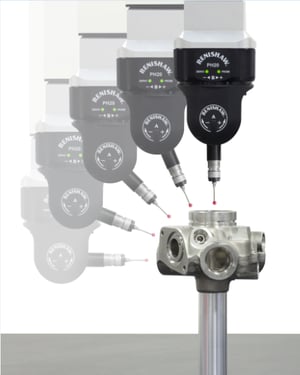 A touch-trigger probe takes a series of single measurements at discrete points. When the sensor inside the ball detects the workpiece it sends a signal with the exact coordinates. Two types of sensors are most common: kinematic (i.e. a mechanical system of rods, balls, and a spring), and strain gauge, which adds a solid state switch to the kinematic system thereby enhancing sensitivity. Both sensor types are durable and can be more economical than optical or laser non-contact probes. Your application determines your sensor type. Among 3-axis systems, kinematic sensors such as the Renishaw TP20, tend to work best with shorter styli (e.g. the diameter of a shallow bore), while strain gauge sensors such as the Renishaw TP200B, retain higher accuracy as stylus length increases (e.g. the width of a deep, narrow groove). The Renishaw PH20 is a 5-axis touch-trigger option. Checking the depth or diameter of a part feature? Need to make sure a divot is positioned correctly? Touch-trigger probes deliver when extreme accuracy counts.
A touch-trigger probe takes a series of single measurements at discrete points. When the sensor inside the ball detects the workpiece it sends a signal with the exact coordinates. Two types of sensors are most common: kinematic (i.e. a mechanical system of rods, balls, and a spring), and strain gauge, which adds a solid state switch to the kinematic system thereby enhancing sensitivity. Both sensor types are durable and can be more economical than optical or laser non-contact probes. Your application determines your sensor type. Among 3-axis systems, kinematic sensors such as the Renishaw TP20, tend to work best with shorter styli (e.g. the diameter of a shallow bore), while strain gauge sensors such as the Renishaw TP200B, retain higher accuracy as stylus length increases (e.g. the width of a deep, narrow groove). The Renishaw PH20 is a 5-axis touch-trigger option. Checking the depth or diameter of a part feature? Need to make sure a divot is positioned correctly? Touch-trigger probes deliver when extreme accuracy counts.
Scanning probes also touch the workpiece; however, unlike touch trigger probes, these probes record a continuous stream of measurements by moving the ball over the surface of the piece, maintaining contact with it throughout the scanning process. As a result, scanning probes, like the 5-axis Renishaw REVO system or the 3-axis Renishaw SP600 gather many more data points and avoid the gaps in data with touch-trigger probing at intervals. If you need to inspect the overall form of a part, check the fit of tight tolerance parts, or increase throughput of complex parts, a scanning probe is the tool for the job.
The Latest in Scanning
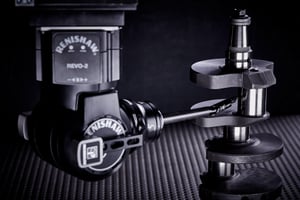 Complex parts, particularly in the automotive market, are making measurement cycles longer. The LM CMM has been integrated with 5-axis REVO 2 and the new SFP2 probe. The SFP2 automates surface finish measurement for reduced part handling and higher throughput. It consists of a probe and a range of modules, which are automatically interchangeable with other probes available for REVO. This gives you the flexibility to easily select the best tool to inspect a wide range of features, all on the LM platform. Data from multiple sensors is automatically referenced to a common datum.
Complex parts, particularly in the automotive market, are making measurement cycles longer. The LM CMM has been integrated with 5-axis REVO 2 and the new SFP2 probe. The SFP2 automates surface finish measurement for reduced part handling and higher throughput. It consists of a probe and a range of modules, which are automatically interchangeable with other probes available for REVO. This gives you the flexibility to easily select the best tool to inspect a wide range of features, all on the LM platform. Data from multiple sensors is automatically referenced to a common datum.
The SFP2 probe takes advantage of the infinite positioning and 5-axis movement capability of the REVO-2 head. Access to the most difficult to reach features is provided by an integral probe C-axis, coupled with various tip geometries and a knuckle joint between module and holder. The SFP2 surface finish system is managed by the same I++ DME compliant interface as the REVO system, and full user functionality is provided by Renishaw’s MODUS metrology software.
Flexible Solutions for Both Touch-Trigger and Scanning
What if your application requires both types of contact probe for the best results? Consider the flexible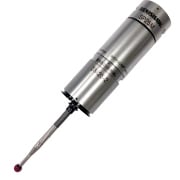 solution of a probe that adapts to both touch-trigger and scanning measurement, such as the Renishaw SP25M. Complex parts with a variety of surface features often call for more than one approach to measurement. The capacity to switch out styli configurations (e.g. ball, point, disc, cylinder, etc.) on the same CMM with no need to re-qualify stylus tips saves time with minimal reduction in throughput.
solution of a probe that adapts to both touch-trigger and scanning measurement, such as the Renishaw SP25M. Complex parts with a variety of surface features often call for more than one approach to measurement. The capacity to switch out styli configurations (e.g. ball, point, disc, cylinder, etc.) on the same CMM with no need to re-qualify stylus tips saves time with minimal reduction in throughput.
Editor's note: Originally published December 2016, updated April 17, 2019.